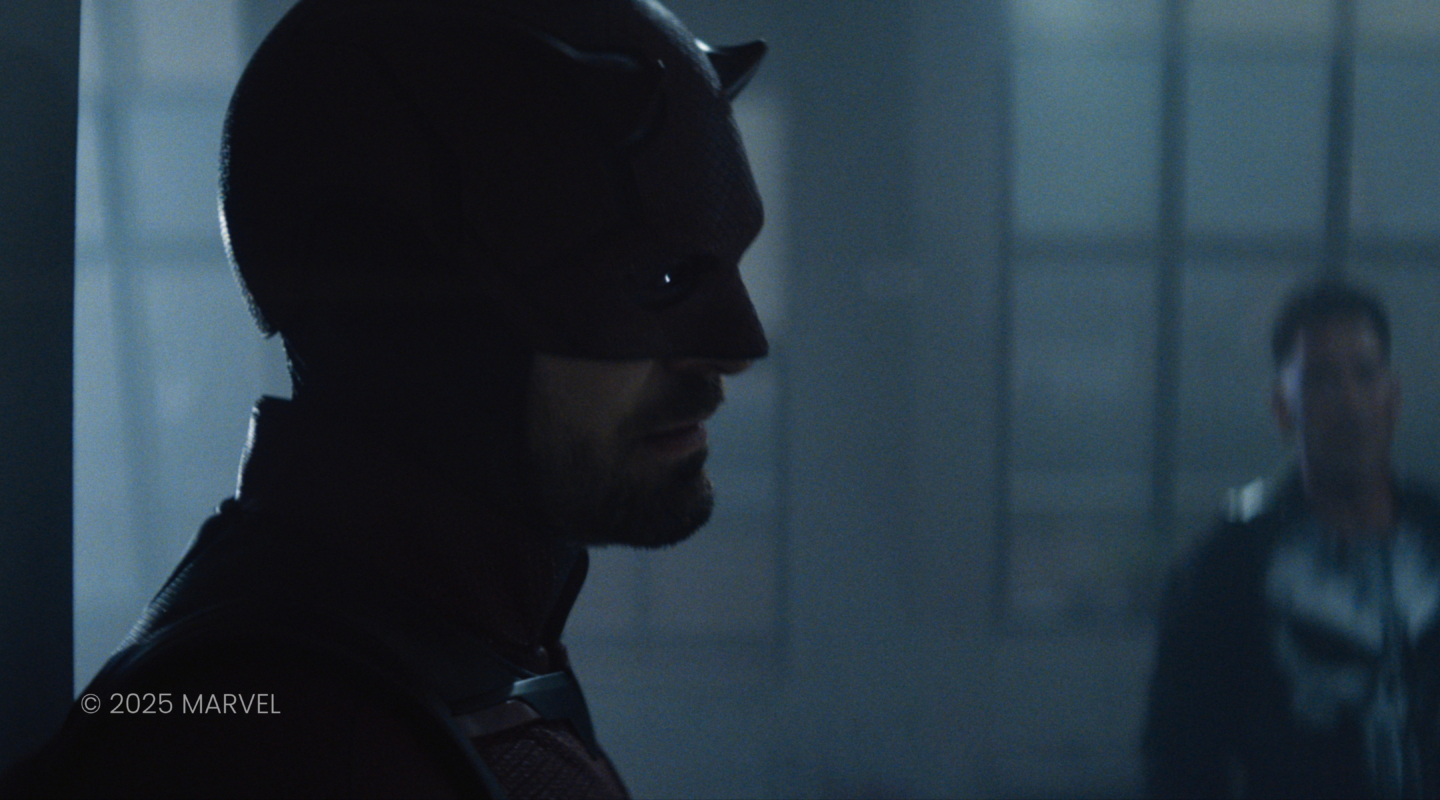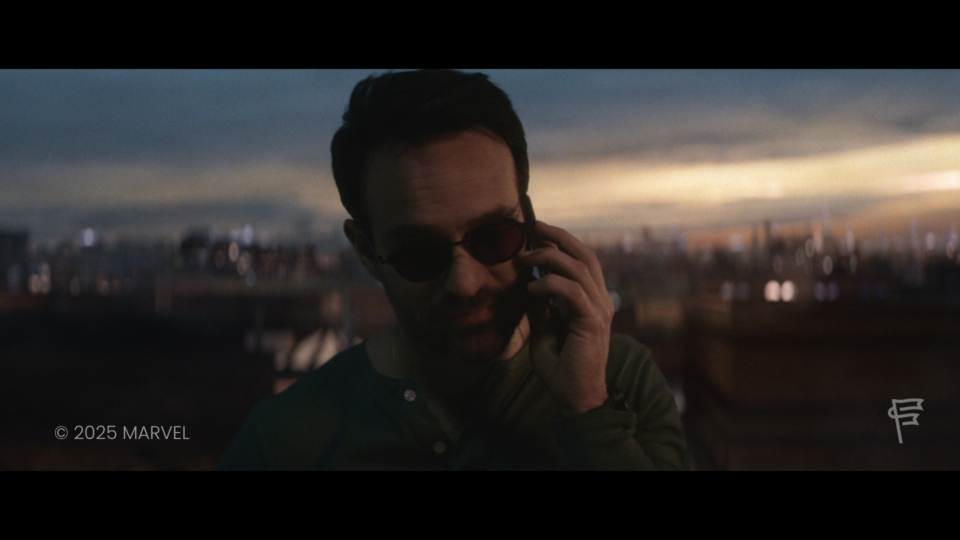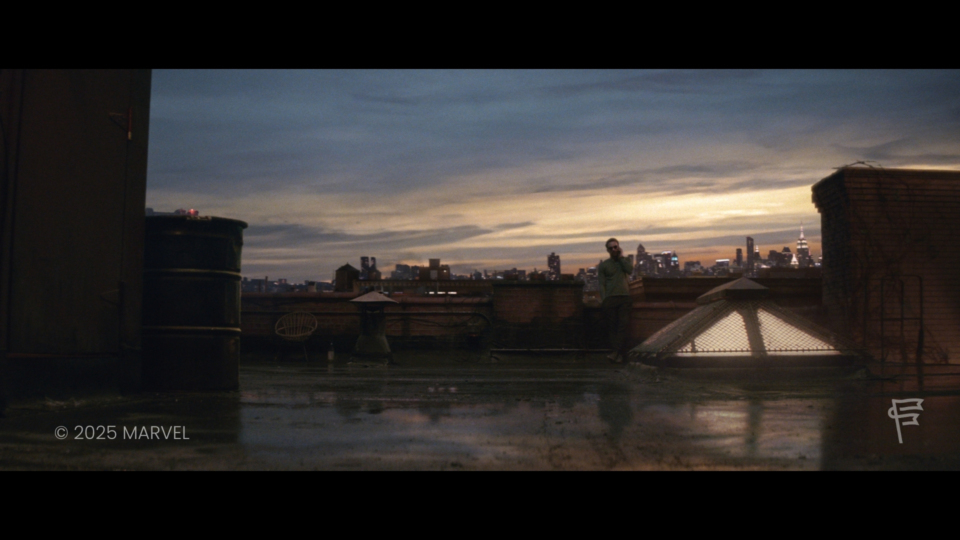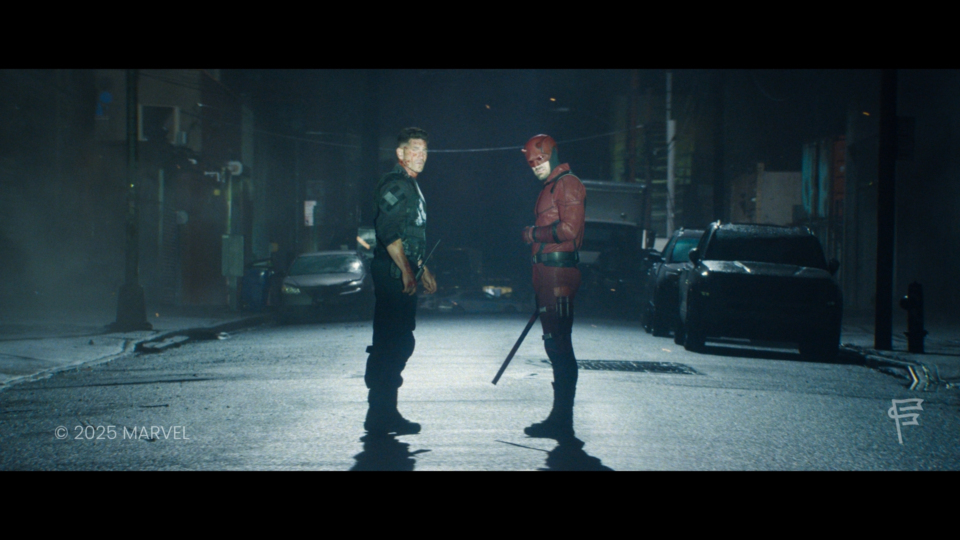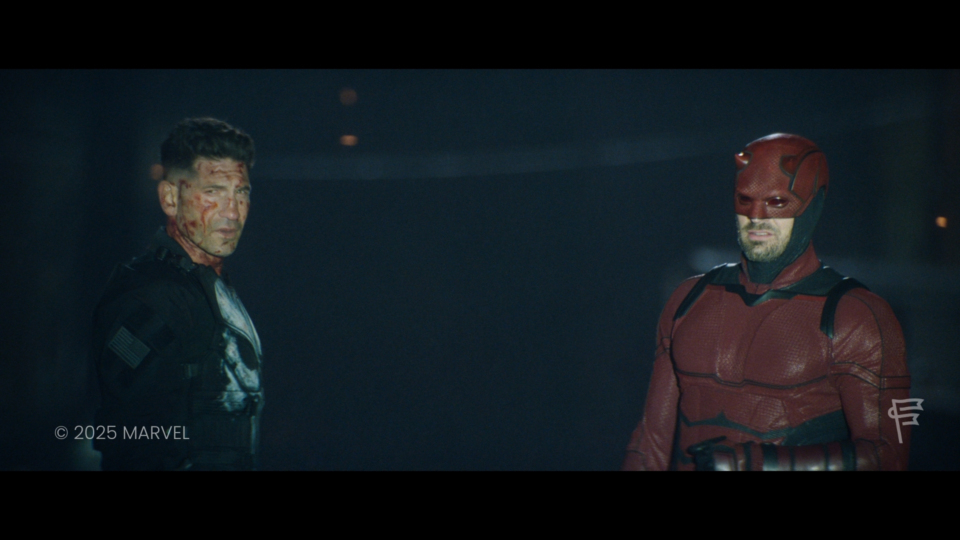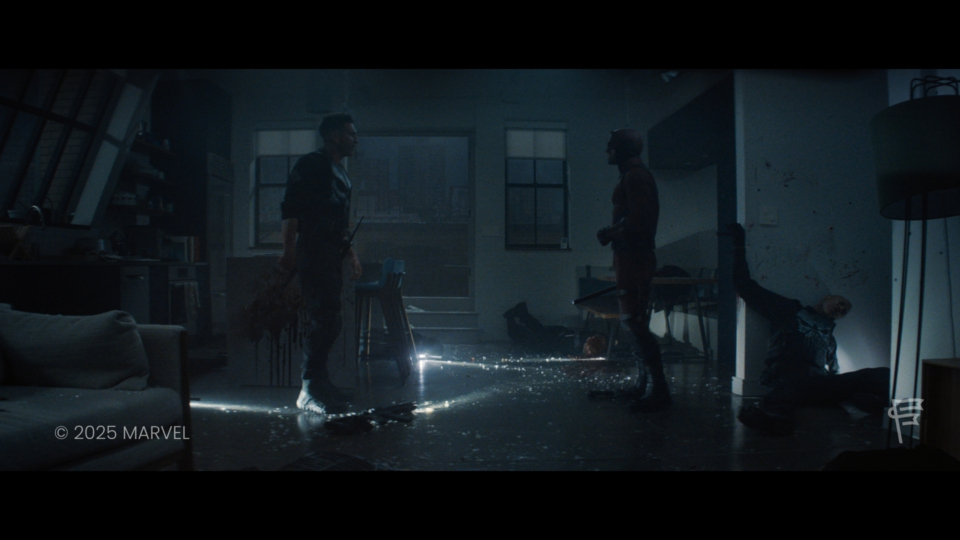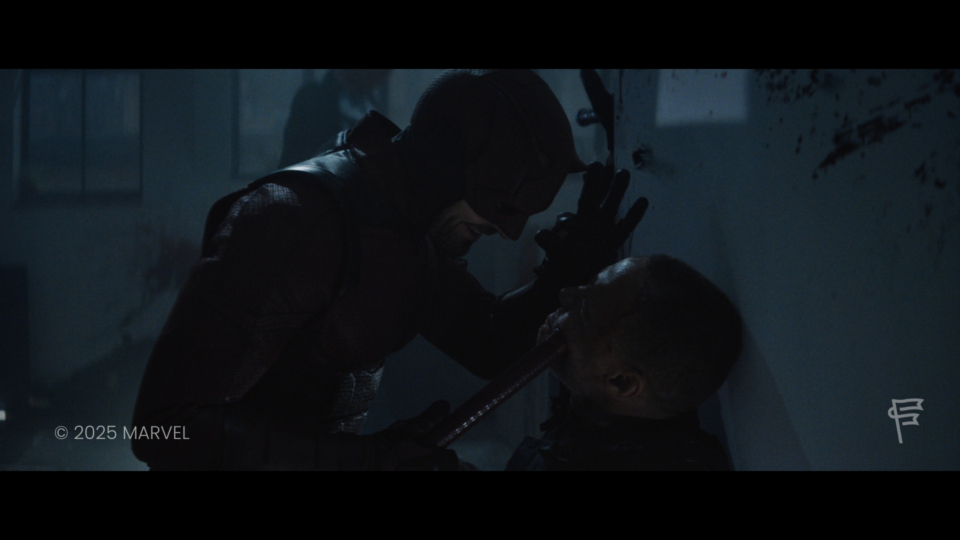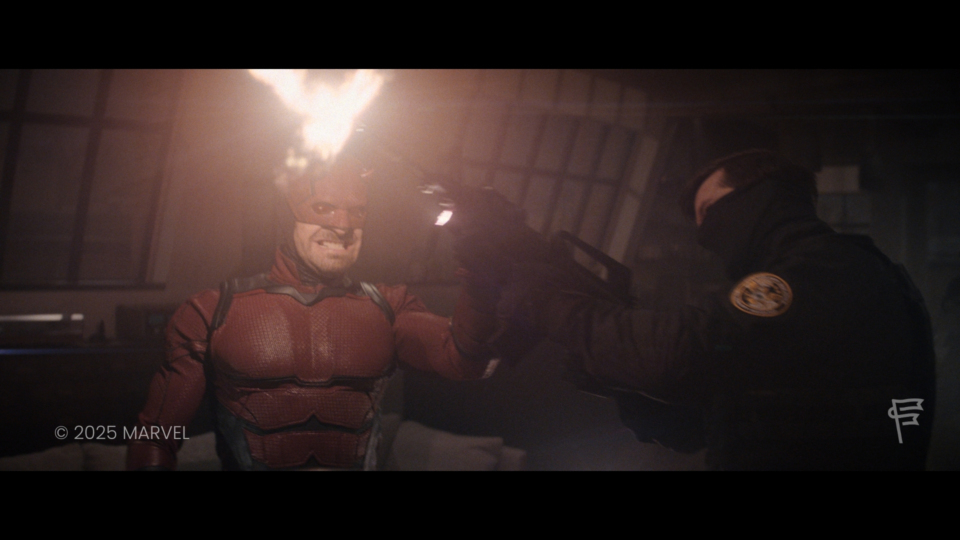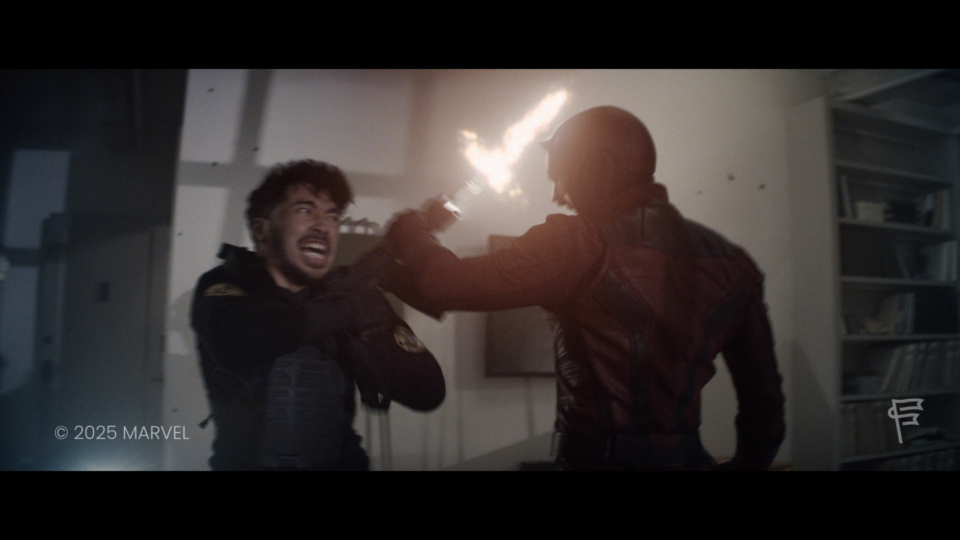DAREDEVIL: BORN AGAIN
Matt Murdock, a blind lawyer with heightened abilities is fighting for justice through his bustling law firm, while former mob boss Wilson Fisk pursues his own political endeavors in New York. When their past identities begin to emerge, both men find themselves on an inevitable collision course.
OUR WORK
Our team contributed to four episodes, for a total of around 150 shots, including️ environment expansions and several fight scenes. We sat down with Visual Effects Supervisor Phil Prates to further discuss our team's work on Daredevil: Born Again, from project inception to completion.
HOW DID YOU GET INVOLVED IN DAREDEVIL: BORN AGAIN?
It started when our Executive Producer, Sarah Wormsbecher, mentioned we were bidding on the show. Since I’d done environment work before, we began discussing some early ideas on how to approach it. We connected with the clients and got their brief for what they were envisioning for the environments.
One of the first big concepts we worked on was what we ended up calling the “picture-perfect New York City rooftop.” It was meant to give this ideal 360-degree view of the skyline, but of course, that doesn’t exist in real life, you can’t look north and south and see all the iconic landmarks from one spot. So we started with a real version of New York and reshaped it, bending it just enough to create a rooftop view that was even better than what you could find in reality.
WAS THIS A PROJECT YOU WERE MOST PERSONALLY EXCITED ABOUT?
Absolutely. Daredevil has always been one of my favorites. He’s a darker, grittier character, and most of his abilities come down to skill and training, not some super serum or cosmic power. He’s a bit like Batman in that way. I also really appreciate the duality in his character, he’s a very intelligent lawyer on one side, and a fighter on the other. That tension between the personal and the heroic makes for great storytelling, so when I heard we were going to work on Daredevil, I was really excited, and not just because of the character, but also because the Netflix show had been so popular. I was curious to see where this version would go and how we could contribute to making his world feel real again.
"When I heard we were going to get to work on Daredevil, I was really excited. (...) I was curious to see where this version would go and how we could contribute to making his world feel real again."
WHAT DID THE TEAM LOOK LIKE AT THE BEGINNING OF THE PROJECT?
In the beginning, it was a pretty lean team focused mainly on the environment work, specifically the rooftop patio and the first two levels of the building. We coordinated with the asset team and our internal CG leads to make sure the scope was manageable and repeatable. At the time, the plan was for 18 episodes using the same environment, so we had to build something that would hold up across that kind of volume. Later, the show shifted to nine episodes, but we had already built an environment that could support more.
To create that “bent” version of New York, we started by sharing photo references with the client. We moved buildings around to find a silhouette that felt right, and then the team began literally rotating and rearranging chunks of the city. It felt like being a city builder, very hands-on and creative. Meanwhile, our asset team was already developing one of the key props: a rope dart. It’s like a collapsible staff with a grappling hook. We built it based on a scanned prop from set, and it became something we used a lot throughout the season.
WHO WERE YOUR MAIN COLLABORATORS ACROSS DEPARTMENTS?
DMP played a huge role, especially Jean-Pierre Riverin from Montreal. He was key to building the environment. He did an entire pass on the New York City skyline, which ended up being the backdrop for every rooftop shot. Without that work, we wouldn’t have been able to complete the sequence. In the finale, we had a massive fight scene that required a lot of continuity cleanup. It had been shot over two days, and the blood placement differed between takes. We had to figure out where the blood came from, when it appeared, and keep it consistent across a huge number of shots. The DMP artists even created a full damage map-tracking where every bullet hit, where every explosion landed. It was one of the most challenging but also one of the most fun sequences to work on.
HOW DID THE TEAM COORDINATE ACROSS LOCATIONS AND TIME ZONES?
Luckily, time zones weren’t a big issue. Collaboration with the Montreal team was super smooth. They handled a few key assets, like the “Gallo head” and a particularly gruesome ripped-face effect done by Gabriel Beauvais. It was gross, but very cool! We also had contributions from the team in Mumbai, especially for roto and paint, but they’re really great at managing their workflow.
"Gritty and photoreal was the main directive. (...) Our job was to be invisible, to blend everything seamlessly into the world, and that’s exactly the kind of work I enjoy most."
DID MARVEL GIVE YOU A SPECIFIC CREATIVE DIRECTION FOR THE LOOK AND FEEL OF THE SHOW?
Yes. Gritty and photoreal was the main directive. Nothing magical or overly stylized. They didn’t want any of that HDR or double-exposure look. It had to feel tactile and grounded, which I personally love. Our job was to be invisible, to blend everything seamlessly into the world, and that’s exactly the kind of work I enjoy most. In the final fight sequence, the direction was to go very bloody. Internally, when we first looked at it, we actually thought it was too bloody. But that was exactly the tone they were going for. It had to feel raw and real.
DID YOU COME UP WITH ANY INTERESTING CREATIVE SOLUTIONS ON THE PROJECT?
One of the trickier shots we handled was what we called the “Gallo head” moment. A character's skull is crushed, and the original idea was to do it with a prosthetic. The practical effect looked great in terms of design, but it didn’t move realistically. As soon as they started pulling on it, the material stretched in a way human bone and skin wouldn’t. Editorial had already made cuts around that limitation, trying to show the moment off-camera and just focus on the before and after. But when we got the edit, we knew we could push it further. The plan became: make the pre-crush version feel more lifelike, and the aftermath way more gruesome. Once they saw what we did, they actually re-edited the sequence to include a full shot of the tearing itself. That gave us a new challenge. Gabriel Beauvais built a full CG version of the head with flaps of torn skin, exposed bone, everything. It was way more than what we’d originally planned, which was mostly focused on the jaw area. But we didn’t have time to do a complete one-to-one CG replacement, so we got creative. We blended practical elements from the original plate with CG and matte painting, using real skin texture where we could and revealing CG underneath as the hand dug in and pulled. It was all about timing, layering, and very precise patchwork.
The end result was super disturbing, which was the point. You see his face, and then the hands come in and just rip it open. Definitely one of the more gruesome shots we’ve worked on, but also a real team effort across departments. Everyone touched those shots in some way. That’s visual effects: the plan evolves, the edit changes, and you adapt.
"The Marvel team was super collaborative, really open to ideas, and very clear about their vision. They were really engaged creatively, which made a big difference."
WHAT DID IT MEAN FOR YOUR TEAM TO WORK ON A MARVEL PROJECT?
The whole team was really excited. Not just because it was Marvel but also because it was Daredevil. A lot of people already loved the character, and getting to help bring that world back to life felt special. But beyond that, working with the team at Marvel was an amazing experience. They were super collaborative, really open to ideas, and very clear about their vision. They were really engaged creatively, which made a big difference. Even under tight timelines, it never felt rushed in the usual way. It was always, “How do we make this better?” instead of “Just get it done.” Everyone on our side felt that. It was a positive, creative process, something you don’t always get. So I think we’re all hoping for a season two!
OUR TEAM
The visual effects in "Daredevil: Born Again" were made possible by the talent and dedication of our team at FOLKS, led by:
